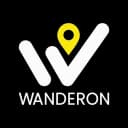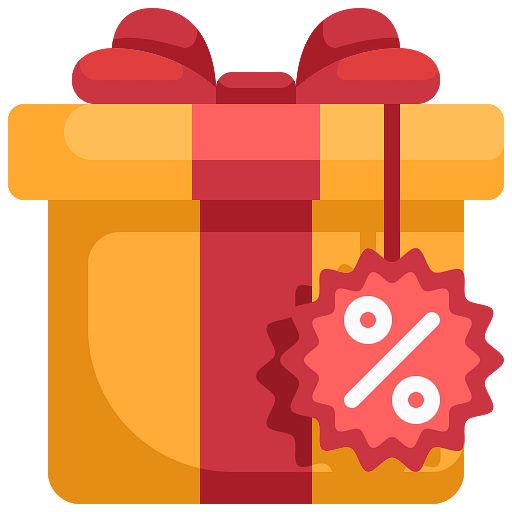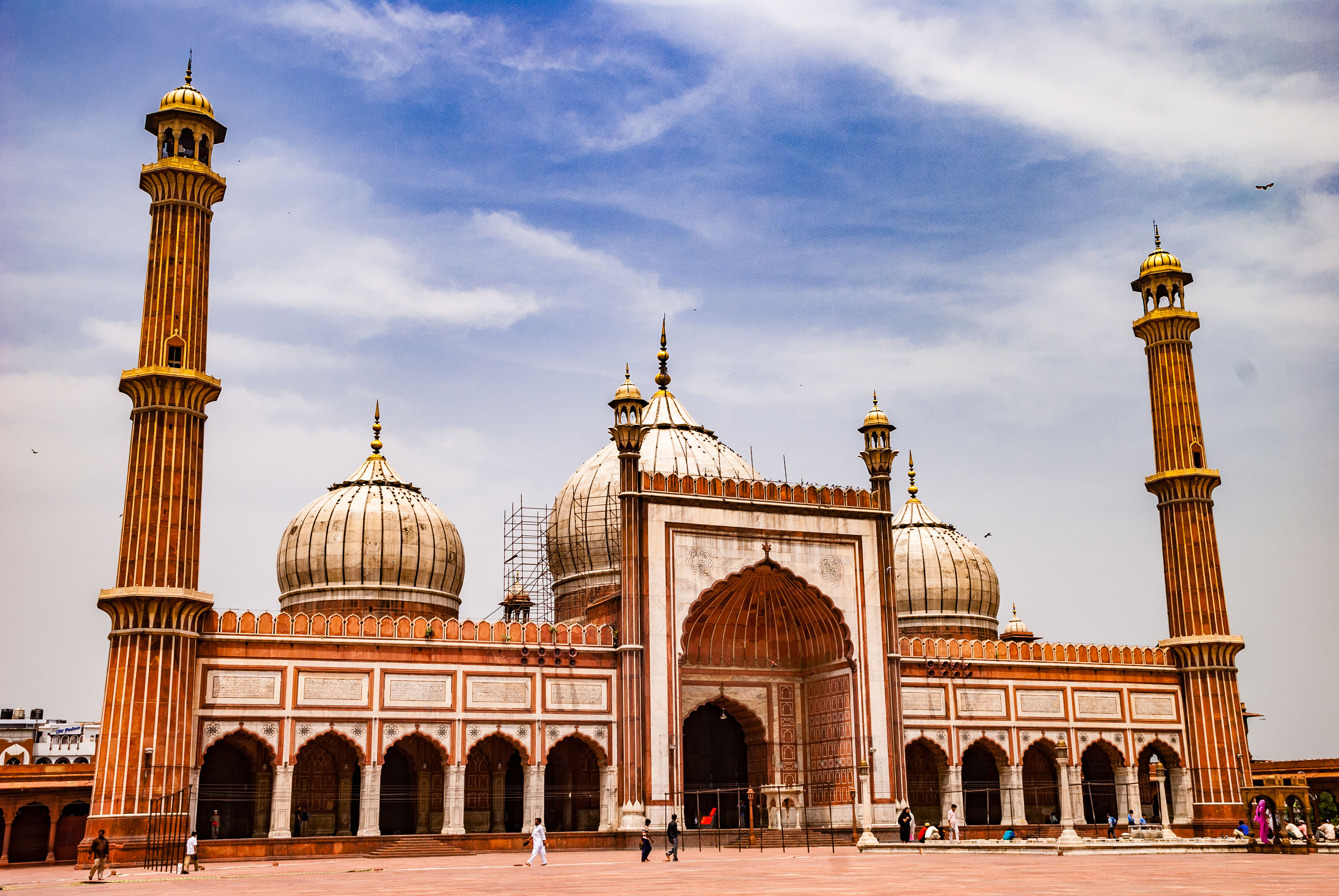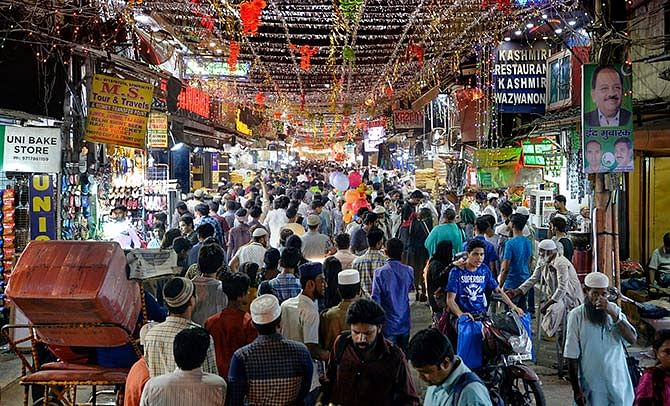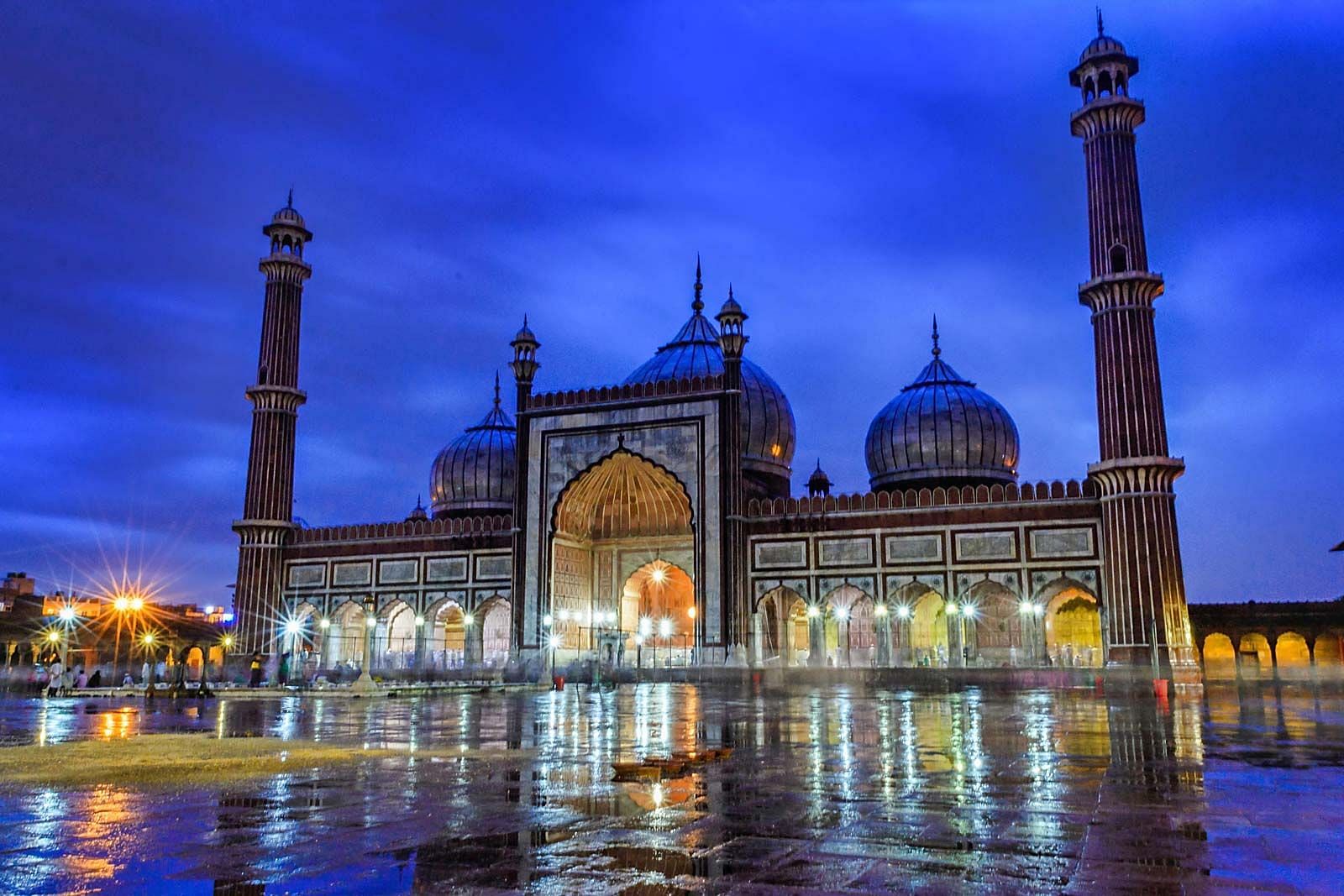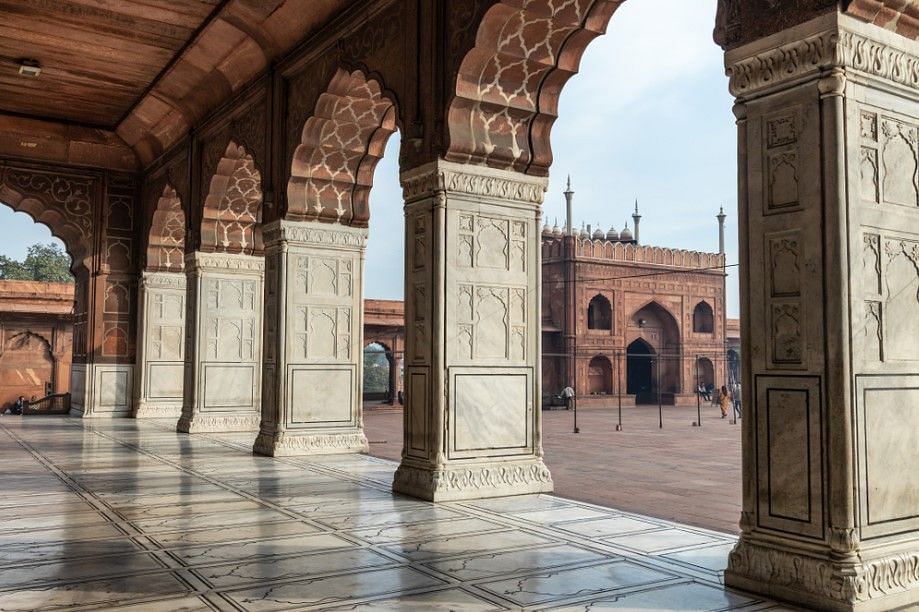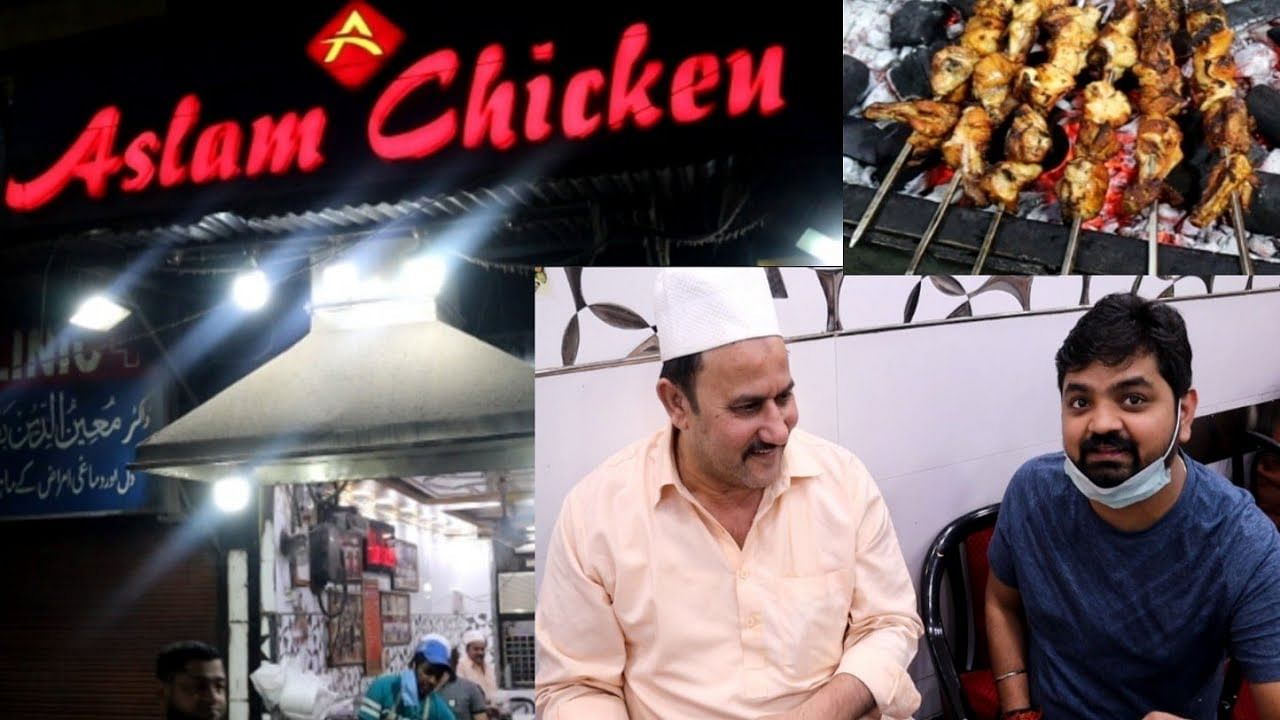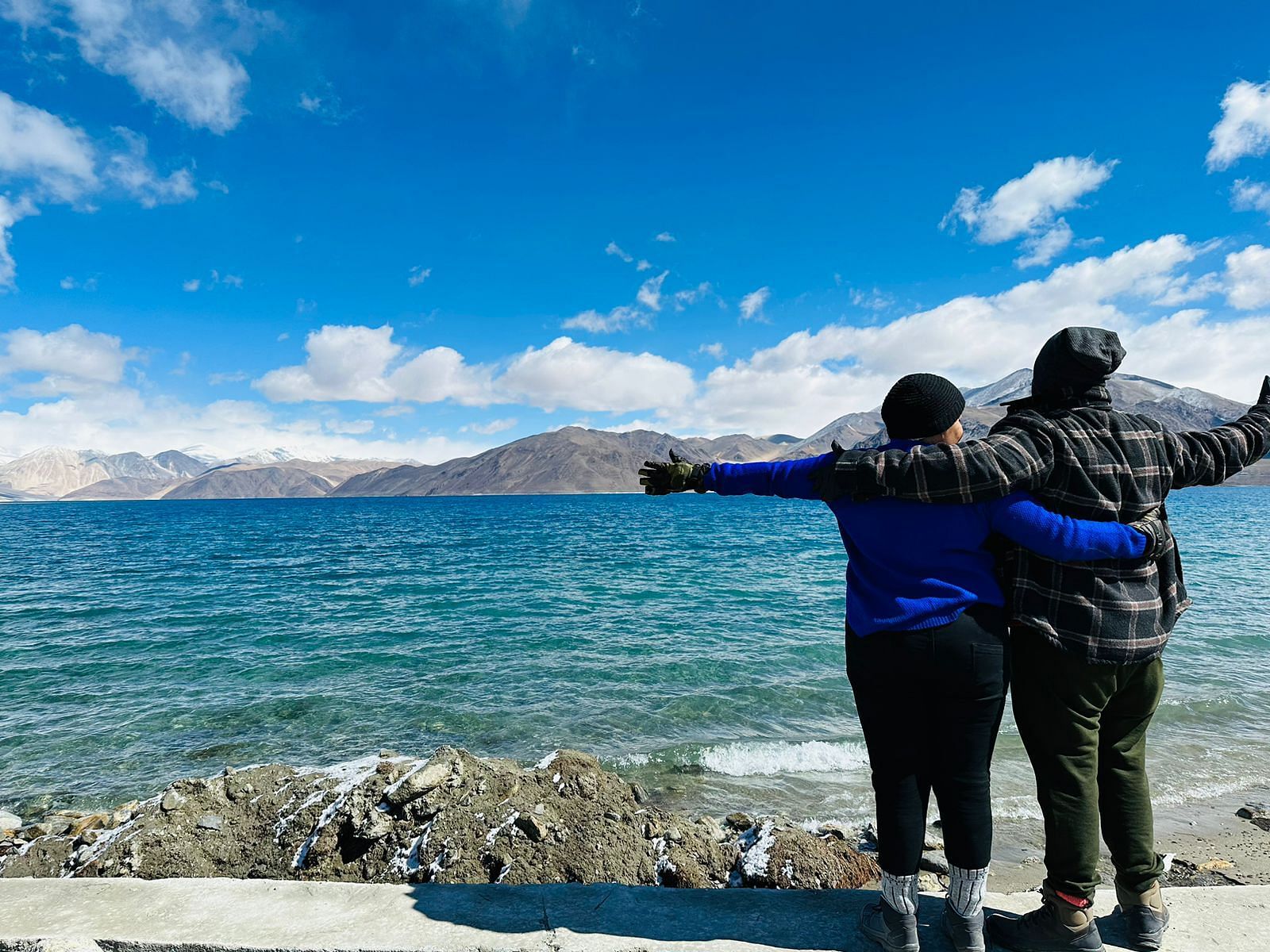Jama Masjid, located in the heart of Old Delhi, is one of the largest and most renowned mosques in India. Built by the Mughal Emperor Shah Jahan between 1644 and 1656, it stands as a majestic symbol of Mughal architecture and Islamic culture.
The mosque’s grandeur is evident in its imposing red sandstone and white marble structure, adorned with intricate carvings and decorative motifs.
Its vast courtyard can accommodate thousands of worshippers during prayer times, fostering a sense of community and spirituality.
Jama Masjid’s three imposing domes, minarets, and the towering presence of its central prayer hall reflect the magnificence of Mughal design.
Beyond its architectural significance, the mosque holds deep cultural and historical importance, serving as a focal point for religious gatherings, festivals, and celebrations in Delhi.
As an enduring testament to India’s rich heritage, Jama Masjid in Delhi continues to captivate visitors with its timeless beauty and spiritual aura.
Delhi, the bustling capital city of India, is a vibrant blend of history, culture, and modernity. Situated in the northern part of the country, Delhi serves as a significant political, cultural, and commercial hub. It boasts a rich heritage dating back thousands of years, evident in its plethora of ancient monuments, forts, and archaeological sites.Do not miss out on the vibrant New Years celebration in Delhi.
Delhi’s cultural tapestry is equally vibrant, with a myriad of festivals, art galleries, museums, and performing arts venues dotting the cityscape.
From traditional dance performances to contemporary art exhibitions, there is always something to captivate the senses.
History of Jama Masjid Delhi:
Jama Masjid in Delhi has a rich history that intertwines with the Mughal dynasty’s reign over India. Commissioned by the fifth Mughal Emperor, Shah Jahan, it stands as a testament to the grandeur and architectural prowess of the Mughal era.Construction of Jama Masjid began in 1650 and took six years to complete, with over 5,000 workers involved in its construction.
The mosque was designed by the architect Ustad Khalil, whose vision brought to life the iconic red sandstone and white marble structure that dominates the skyline of Old Delhi.
The mosque’s name, Jama Masjid, translates to “Friday Mosque,” highlighting its significance as a place of congregation for Muslims during the weekly Friday prayers.
Its vast courtyard can accommodate up to 25,000 worshippers, underscoring its importance as one of the largest mosques in India.
Jama Masjid has witnessed significant historical events over the centuries. It survived the tumultuous times of British colonial rule and played a pivotal role in India’s struggle for independence.
During the Indian Rebellion of 1857, the mosque became a refuge for freedom fighters and a symbol of resistance against colonial oppression.Take a look at our guide if you wish to start a travel youtube channel.
Best Time To Visit Jama Masjid Delhi:
October to March
The optimal time to visit Jama Masjid in Delhi depends on various factors such as weather and crowd conditions.
Generally, the best time to visit is during the cooler months of October to March. During this period, the weather is more pleasant, making it comfortable to explore the mosque and its surroundings.
Additionally, visiting during weekdays and avoiding weekends can help avoid large crowds, allowing for a more peaceful and immersive experience.
Early mornings or late afternoons are also preferable times to visit to avoid the peak heat of the day.
However, regardless of the time, experiencing Jama Masjid during prayer times, especially during the Friday congregation, can offer a glimpse into the mosque’s vibrant spiritual atmosphere and cultural significance. f you love to travel, why not do what you love for a living? Take a look at all the possible Travel Jobs and decide which one calls out your name.
Facts About the Architecture of Jama Masjid:
Jama Masjid, located in Delhi, India, is one of the largest and most renowned mosques in the country. Built between 1644 and 1656 by the Mughal Emperor Shah Jahan, it is an exemplary piece of Mughal architecture.The Jama Masjid is constructed using red sandstone and white marble. Its architecture is a blend of Mughal and traditional Indian styles, characterized by intricate carvings, domes, and minarets.
The mosque features a vast courtyard that can accommodate thousands of worshippers. It is one of the largest mosque courtyards in the world.
The main prayer hall, covered by three large domes, is supported by massive pillars. The central dome is the highest and is adorned with white marble stripes.
The mosque boasts four towering minarets, each standing at a height of around 40 meters. These minarets provide a striking visual element to the mosque’s skyline and are accessible via a winding staircase.
Intricate calligraphy, floral motifs, and geometric patterns adorn the walls and ceilings of the mosque. The marble mihrab (prayer niche) is particularly noteworthy for its detailed craftsmanship.
The domes of Jama Masjid are adorned with inverted lotus motifs and are topped with a golden pinnacle. These bulbous domes are iconic features of Mughal architecture.
The mosque is accessed through three grand entrances, the largest of which is the eastern gate. Each entrance is adorned with impressive arched gateways and towering minarets.
Aside from its architectural grandeur, Jama Masjid holds immense historical significance. It was the principal mosque of Shah Jahan’s new capital, Shahjahanabad (now Old Delhi), and it remains an important religious and cultural landmark in the city.
The mosque can accommodate up to 25,000 worshippers during prayer times. It continues to be an active place of worship, attracting both locals and tourists alike.
Jama Masjid’s architectural style has influenced mosque construction across the Indian subcontinent, with many subsequent mosques borrowing elements from its design.
Restaurants Near Jama Masjid:
Karim’s:
Located in the vicinity of Jama Masjid, Karim’s is renowned for its Mughlai cuisine, particularly its delectable kebabs, biryanis, and rich gravies. It’s been serving delicious food for generations and is a must-visit for anyone exploring Old Delhi’s culinary delights.
Al Jawahar:
Another gem near Jama Masjid, Al Jawahar offers authentic Mughlai and North Indian dishes in a no-frills setting. Their specialties include kebabs, curries, and traditional bread like naan and sheermal.
Aslam Chicken:
Famous for its spicy and flavorful chicken dishes, Aslam Chicken is a popular spot among locals and tourists alike. Their tandoori chicken and butter chicken are highly recommended for those craving succulent, well-marinated poultry.
Kake Di Hatti:
This iconic eatery near Jama Masjid is known for its Punjabi-style vegetarian fare, especially its hearty and satisfying Punjabi thalis, chole bhature (chickpea curry with fried bread), and dal makhani (creamy lentil curry). Do Check out the best restaurants in Delhi for Valentines day!
Haji Shabrati Nihari Wale:
If you’re in the mood for a traditional breakfast or brunch, head to Haji Shabrati Nihari Wale for their mouthwatering nihari—a slow-cooked meat stew served with naan or khameeri roti (leavened bread). It’s a favorite among locals for its rich flavors and tender meat.
Located within walking distance of Jama Masjid, Hotel Tara Palace offers comfortable accommodation with modern amenities. Its convenient location makes it an ideal choice for travelers who want to explore Old Delhi’s historical sites and bustling markets.
Situated in the heart of Old Delhi, Hotel Al Hind provides budget-friendly accommodation for travelers looking to experience the city’s rich heritage and vibrant street life. The hotel offers clean rooms and basic facilities, making it a suitable option for budget-conscious travelers.
Just a short drive from Jama Masjid, Hotel Godwin Deluxe offers contemporary rooms and excellent service. Its central location in Paharganj makes it convenient for travelers to access popular tourist attractions and shopping areas in Delhi.
Hotel New Hindustan International:
Nestled amidst the bustling streets of Old Delhi, Hotel New Hindustan International provides comfortable accommodation with modern amenities. Its proximity to Jama Masjid and other historical landmarks makes it a convenient choice for travelers interested in exploring Delhi’s rich cultural heritage.
Located near Jama Masjid, Hotel Aiwan-e-Shahi offers comfortable rooms and warm hospitality. Its traditional decor and convenient location make it a popular choice among travelers seeking an authentic experience in Old Delhi.
Things to Do near Delhi Jama Masjid:
Heritage Walk in Old Delhi:
Take a guided heritage walk through the narrow lanes of Old Delhi surrounding Jama Masjid. Explore the historical architecture, bustling markets, and hidden gems while learning about the area’s rich cultural heritage.
Just a short walk from Jama Masjid lies the iconic Red Fort, a UNESCO World Heritage Site. Explore its magnificent architecture, lush gardens, and fascinating museums to delve into India’s rich history.
Dive into the vibrant chaos of Chandni Chowk, one of Delhi’s oldest and busiest markets. Wander through its narrow lanes lined with shops selling spices, textiles, jewelry, and street food delicacies.
Embark on a guided bicycle tour of Old Delhi to experience its sights, sounds, and flavors up close. Cycle through the bustling streets, stop at historical landmarks, and sample local street food along the way.
Indulge your taste buds in a street food extravaganza around Jama Masjid. Try iconic dishes like kebabs, parathas, chaat, and jalebi from renowned food stalls and eateries in the area.
How To Reach Jama Masjid?
By Metro:
The nearest metro station to Jama Masjid is Chawri Bazar Metro Station on the Yellow Line. From there, it’s a short walk to the mosque.
By Bus:
Various bus routes ply to Jama Masjid. You can check with local transportation authorities or use navigation apps to find the best route.
By Car:
If you’re driving, you can navigate to Jama Masjid using GPS or maps. However, keep in mind that parking might be limited in the area, so it’s advisable to use public transportation if possible.
Depending on where you are in Old Delhi, you can also reach Jama Masjid on foot. It’s a bustling area, so be prepared for crowds and narrow lanes.

